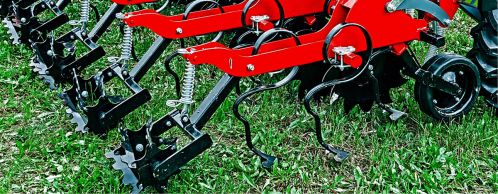
Top Five Points to Consider for Growing Crops in 2023
Article By: Brad Mathson of Provision Partners
One of the most common questions I get asked is, "What is the price of fertilizer, and is the price going to go up or down?"
Usually, I have a pretty good idea of how to answer that question. However, this year, all I can say is that I have no clue. There are so many factors affecting the fertilizer markets this year and many of those factors are emotionally driven, which compounds the complexity of this market with fertilizer costs accounting for about 35% of a crop budget.
So, what do you do in 2023?
- Do a 2023 budget now! Just because inputs are higher than we are accustomed to, we do have new crop 2023 futures for corn around $6 and soybeans at $13. As long as you cover your crop inputs and a margin for yourself with profitable sales, that is one of the best ways to hedge your purchases. Yield is still king, working your budget to find a way to maintain or increase yields while managing cost is very crucial this year.
- Soil test. This is huge! You want to make sure you are covering critical soil test levels, so you do not hurt yields and cut back on areas that you have built up over the years. Variable rate fertilizer applications are a great tool to use to effectively manage your fertilizer dollars without sacrificing yield. Making sure your soil has the proper pH is also critical to make the fertilizer that is in your soil and that you commercially apply available to your plants. With a pH of 6.0 compared to 6.8pH, you waste about 19.7% of the fertilizer you apply to your crops. If your pH is 5.5, that waste goes to almost 33%.
- Buy your seed early. Seed prices are up $20 to $30 per bag this year. If you buy early, early pay seed discounts can save you 8% or more on that purchase. Another benefit of buying early is that you can lock in the supply of varieties that best fit your farm's soils and management styles. Working with your dealer and selecting the proper seed variety and placement can enhance yields by as much as 30%. So, this is a great place to start early and improve yield while managing costs.
- Weatherproof your crop. Work with your agronomist this fall and look at this year's crop roots and see how they are moving through the soil. Do you have compaction? Is your planter putting too much down pressure causing the root not to proliferate through the soil? Fixing this problem can easily give you 10 to 40 bushels more yield and help your crop grow during any dry spell that you may have during the growing season.
- Tissue test in 2023. This is a great way to make sure your crop has all the nutrition to give you the best yields. Tissue test early when corn and soybeans are in the V3 stage. This will give you an opportunity to make adjustments and have a positive effect on the growing crop.
If you have any questions, please reach out to a Provision Partners agronomist to help you with the 2023 crop.
About the Author
For more than 30 years, Brad Mathson, CCA, the manager of the agronomy sales for Provision Partners Cooperative, has had a passion for agronomy. Originally from Whitehall, WI, Matheson previously worked as a senior precision ag planner for Southern States Coop in Virginia where he was in charge of the company's 2.5-million-acre GIS database. He trained the company's 250 agronomists and worked with growers across the Southeast on crops from peanuts to pecans and 30 other crops. For more information, contact Mathson as bmathson@provisionpartners.coop or at 715.284.5354.



